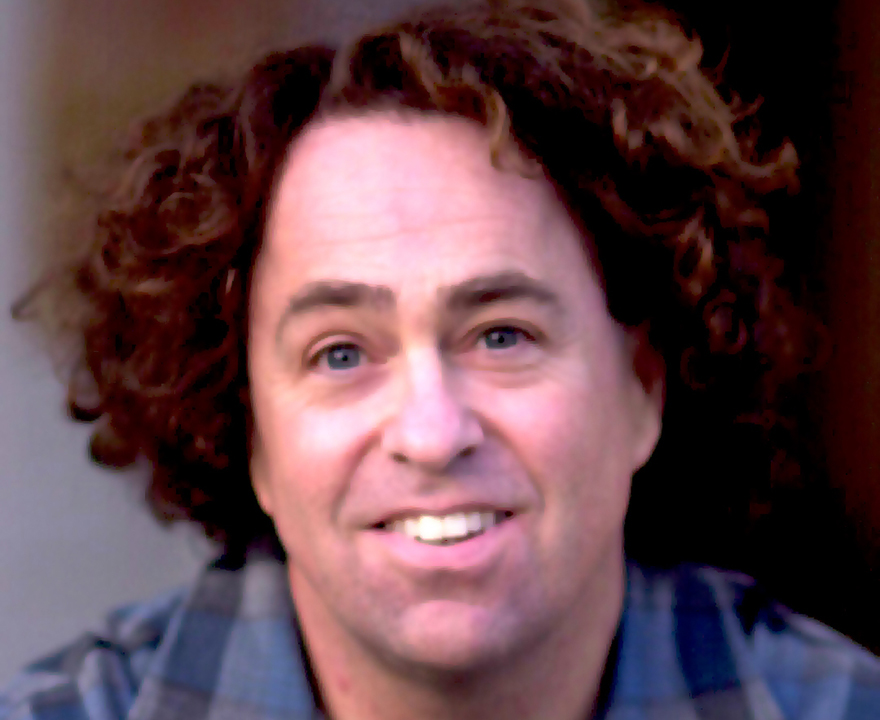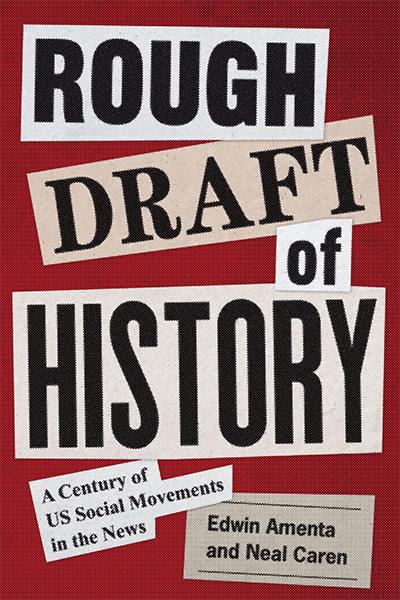Rough Draft of History: A Century of US Social Movements in the News

Rough Draft of History: A Century of US Social Movements in the News
- November 2, 2022
- New book by UCI sociologist Edwin Amenta analyzes more than a century of digitized news to highlight how journalists reported on hundreds of causes, and the consequences of their coverage
-----
 What factors influence the news coverage of social movements? Why do some activist
groups gain media momentum where others fail? In his new book, Rough Draft of History: A Century of US Social Movements in the News (Princeton University Press), UCI sociologist Edwin Amenta and coauthor Neal Caren
examine how journalists have reported on hundreds of social movement organizations
from the 1900s to the present and the consequences of that coverage. Below, Amenta
offers expert insight from their analysis of digitized news useful for social and
political changemakers looking to pave a path forward in a rapidly changing media
landscape.
What factors influence the news coverage of social movements? Why do some activist
groups gain media momentum where others fail? In his new book, Rough Draft of History: A Century of US Social Movements in the News (Princeton University Press), UCI sociologist Edwin Amenta and coauthor Neal Caren
examine how journalists have reported on hundreds of social movement organizations
from the 1900s to the present and the consequences of that coverage. Below, Amenta
offers expert insight from their analysis of digitized news useful for social and
political changemakers looking to pave a path forward in a rapidly changing media
landscape.
Which social movements received the most media coverage during the twentieth century? Did you discover any patterns in coverage across movements?
The social movements with the most coverage include some that might be expected, such as the Black rights movement, the women’s rights movement, and the environmental movement. But one surprise is that the labor movement was by far the most newsworthy. As might be expected, the peak of attention to labor came in the 1930s and 1940s, to the Black rights movement in the 1960s, and to the women’s rights and environmental movements in the 1970s and 1980s. Although you might expect there would be a lot of news coverage of movements during the Progressive Era in the first part of the twentieth century, there was not much a national public sphere yet.
You note that the labor movement received the most media attention but is generally understudied in the scholarly community. Were there others? What conclusions do you draw from this finding?
The veterans’ rights movement was extensively covered in the news as were the anti-alcohol and nativist/white supremacist movements, far more than they have been studied. On the other hand, anti-war and LGBTQ rights movements, for instance, have been studied far more than they’ve been newsworthy. Mainly movements that peaked earlier in the twentieth century or were conservative, or both, have been understudied relative to their impact on public discourse. That is not surprising, however, as the area of study took off in the 1980s in the wake of progressive movements that came to the fore the 1960s and 1970s. Still, it suggests that scholars may need to pay attention to these ones that have received less attention to see if their arguments hold good for different types of movements or whether new lines of thinking are needed.
What drove the news coverage of movements?
For entire movements, some combination of internal and external characteristics led them to be extensively covered. The movement-related ones included having a lot of organizations and disruptive capacities plus a willingness to use them. The political contextual conditions included having gained previous policies favoring their constituents and when a left- or right-wing government was in power. For individual movement organizations, it helped to be politically engaged, have high membership, and at least some experience with disruptive tactics.
Which movement organizations made waves in the news?
We examined the 100 movement organizations that were extensively covered in a specific year in the century. There are many well-known organizations among these 100—longstanding ones like the AFL-CIO, NAACP, American Legion, Women’s Christian Temperance Union, League of Women Voters, Ku Klux Klan, and many unions, as well as more recent organizations like the ACLU, NRA, AARP, NOW, and Greenpeace. But others made a big if brief splash in public discourse and were not heard from much again. From the beginning of the century there were the League of American Wheelmen, National Security League, German-American Alliance, Women’s Organization for National Prohibition Reform, Ham and Eggs, and the America First Committee. Later in the century, there were the Free Speech Movement, Peace and Freedom Party, Jewish Defense League, Professional Air Traffic Controllers Organization, and ACT-UP among others.
What did receiving major news coverage mean for the movements? Was all news for movement organizations good news? What determined the sort of treatment they received when they made big news?
Getting coverage usually meant public attention for the issues that the movements sought to advance. News attention also tended to promote the growth and public profile of the organizations that received it. As for good news, that was not at all the case. We examined the substance and tone of coverage for the 100 organizations during their most prominent year. About a third of them on balance received favorable coverage in each dimension. In some instances, movement organizations received such poor treatment in the news that it sent them into a kind of death spiral. That was the case for the German-American Alliance during the First World War, the Black Legion in the 1930s, and the Black Panther Party in the early 1970s. Usually the kind of treatment depended on what the organization was in the news for. Organizations in the news for legislative or litigation campaigns tended to gain good news, whereas organizations in the news for investigations, trials, or violent action tended to receive bad news. The coverage of strikes was usually substantive, but typically negative in tone toward the strikers.
How does media coverage of social movements in the twentieth century compare with what we've seen the first two decades of this century?
In this century, there are many more movement organizations, and even when attention declines for movements and organizations, it rarely goes away altogether. That means news attention has become increasingly dispersed. But the main changes in this century are in politics and the news media. Politics have become more nationalized and asymmetrically polarized, and structural aspects of political institutions favor the political right. That situation tends to prevent the kinds of reforms that have historically aided left movements and their constituents. Meanwhile, the internet destroyed the monopoly power of professional news organizations—which used to dominate public discourse. Growing along social media have been extensive right-wing disinformation media that accentuates the asymmetry in politics. These political and media imbalances mainly work to the advantage of right-wing movements and campaigns. The Democratic party and movements of the left remain subject to the scrutiny and watchdog role of the professional news media, whereas the Republican party and right are not. These transformations of politics and media also present challenges for the future of democracy in this country.
Rough Draft of History: A Century of US Social Movements in the News is coauthored by Edwin Amenta, sociology professor at the University of California, Irvine, and Neal Caren, sociology associate professor at the University of North Carolina, Chapel Hill.
-----
Would you like to get more involved with the social sciences? Email us at communications@socsci.uci.edu to connect.
Share on:
Related News Items
- Careet RightUCI sociologists earn American Sociological Association honors, leadership roles
- Careet RightThe Townsend Plan: The forgotten movement that shaped Social Security
- Careet RightMultiple honors for UCI soc sci's Maricela Bañuelos
- Careet RightUCI Experts On: Social movements
- Careet RightEdwin Amenta and Neal Caren, "Rough Draft of History: A Century of US Social Movements in the News" (Princeton UP, 2022)


